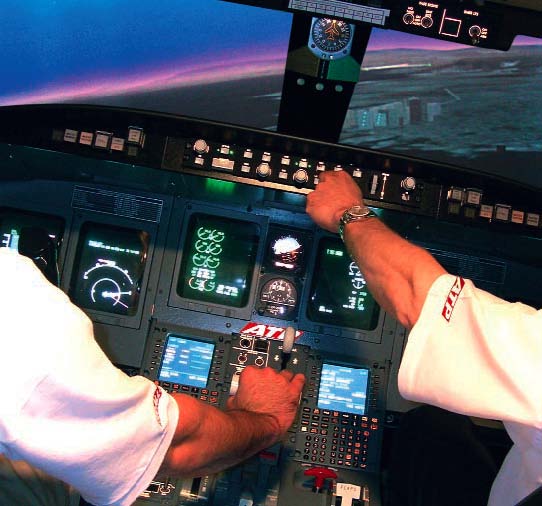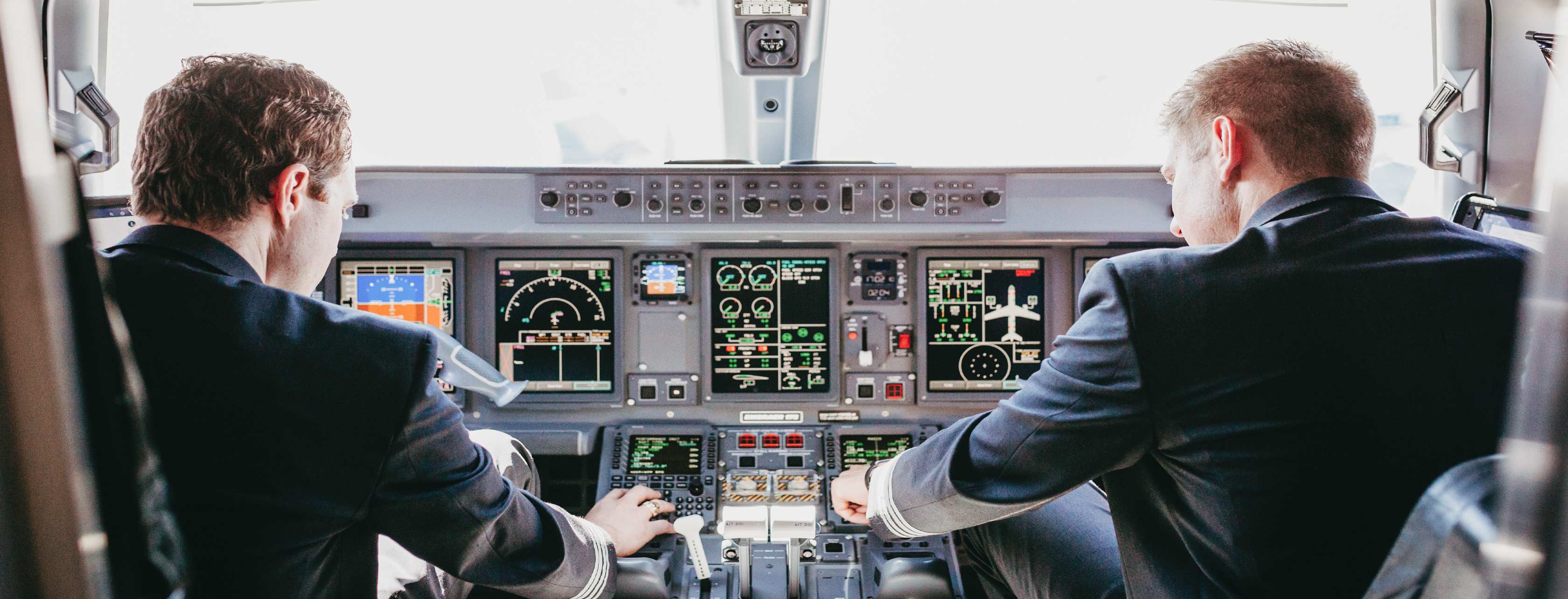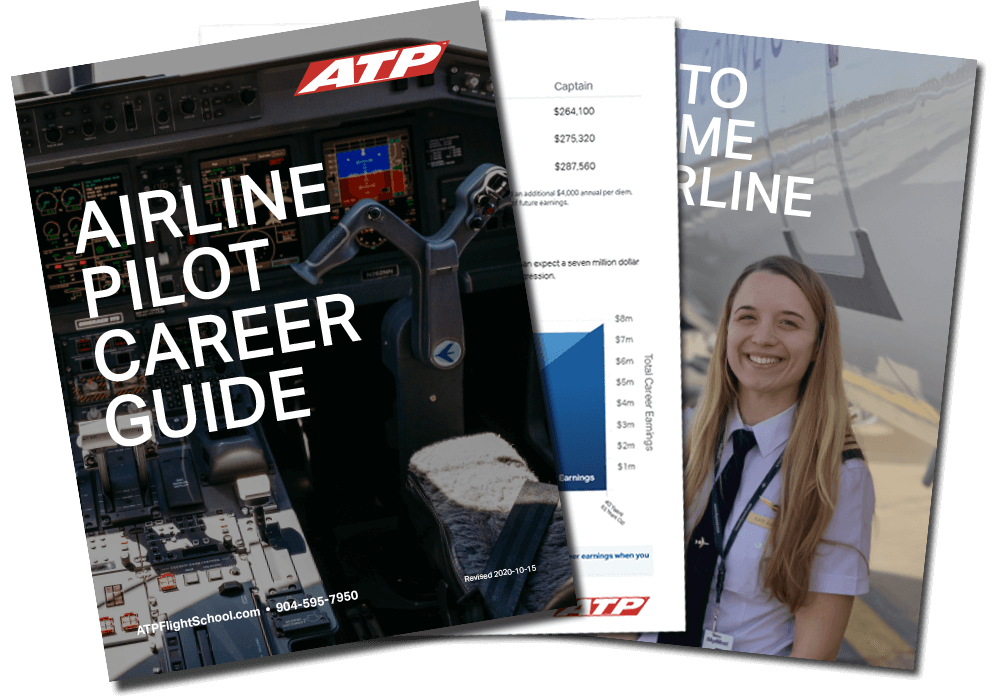 The First Officer gripped the yolk and focused on rudder control and keeping the airliner on course while the Captain kept up a calm but steady litany of DME information and check-list items. The staccato beat of the rain seemed louder with every minute that the approach dragged on while the moment of truth rushed up to meet them. At their final minimum approach altitude the Captain acknowledged the Tower’s clearance to land and peered out the windshield for any signs of the airport’s landing lights. “Missed approach point in 1 mile, point 5, point 3, point 1…. Missed Approach Point, no runway in sight.” The First Officer crisply pushed the Thrust Levers forward and gave the command neither wanted to hear at that point, “Missed Approach, set Go-around Thrust, Spoilers in, Flaps 8 degrees.” The Canadair Regional Jet did what it was created to do and even with one cold lifeless engine the aircraft roared back up into the black night and climbed away from danger.
This was the third approach of the day for the flight crew so they were relieved when the thunder and lightning suddenly disappeared and the lights came on in the crisp new CRJ Sim. I said to the crew, “ok Men, you are on flight freeze. Push your seats back and let’s talk for a few minutes about how we could have handled that situation better”. We spent the next few minutes talking about how to stay coordinated as a crew so that descents can be initiated at precise points in time and space, as they are depicted on the Jepp Chart. This is an important discussion for pilots accustomed to shooting approaches at 80 knots in light twins who now find themselves executing approaches in a swept-wing jet at 200 knots.
Anyone having completed the course will tell you that there are a lot of lessons to be learned by pilots entering ATP’s Regional Jet Program, and over the next few weeks I will be sharing some of the common mistakes made by some of these pilots (don’t worry folks, no student’s names will be used) and the solutions that they learn in order to safely operate an airliner in a Part 121 Airline operation. I look forward to sharing them, and hope that you will find them enlightening.
The First Officer gripped the yolk and focused on rudder control and keeping the airliner on course while the Captain kept up a calm but steady litany of DME information and check-list items. The staccato beat of the rain seemed louder with every minute that the approach dragged on while the moment of truth rushed up to meet them. At their final minimum approach altitude the Captain acknowledged the Tower’s clearance to land and peered out the windshield for any signs of the airport’s landing lights. “Missed approach point in 1 mile, point 5, point 3, point 1…. Missed Approach Point, no runway in sight.” The First Officer crisply pushed the Thrust Levers forward and gave the command neither wanted to hear at that point, “Missed Approach, set Go-around Thrust, Spoilers in, Flaps 8 degrees.” The Canadair Regional Jet did what it was created to do and even with one cold lifeless engine the aircraft roared back up into the black night and climbed away from danger.
This was the third approach of the day for the flight crew so they were relieved when the thunder and lightning suddenly disappeared and the lights came on in the crisp new CRJ Sim. I said to the crew, “ok Men, you are on flight freeze. Push your seats back and let’s talk for a few minutes about how we could have handled that situation better”. We spent the next few minutes talking about how to stay coordinated as a crew so that descents can be initiated at precise points in time and space, as they are depicted on the Jepp Chart. This is an important discussion for pilots accustomed to shooting approaches at 80 knots in light twins who now find themselves executing approaches in a swept-wing jet at 200 knots.
Anyone having completed the course will tell you that there are a lot of lessons to be learned by pilots entering ATP’s Regional Jet Program, and over the next few weeks I will be sharing some of the common mistakes made by some of these pilots (don’t worry folks, no student’s names will be used) and the solutions that they learn in order to safely operate an airliner in a Part 121 Airline operation. I look forward to sharing them, and hope that you will find them enlightening.
Lessons Learned in Jet Training
Published Mar 1, 2012 on Pilot Jobs
FREE Airline Pilot Career Guide. — Requirements, Pay, Steps and More. Download Now »
A vicious rain pelted the hardened windshield and caused a loud roar while flashes of lightening flickered across the strained faces of the two pilots shooting the VOR approach to runway 31 Left at New York’s John F. Kennedy Airport. The crew had moments earlier fought a stubborn engine fire which had taken every ounce of the Halon Fire-retardant that they carried aboard to extinguish, and the flames had left them with a single operating engine and an urgent need to get on the ground before the second engine had a chance to re-ignite.
 The First Officer gripped the yolk and focused on rudder control and keeping the airliner on course while the Captain kept up a calm but steady litany of DME information and check-list items. The staccato beat of the rain seemed louder with every minute that the approach dragged on while the moment of truth rushed up to meet them. At their final minimum approach altitude the Captain acknowledged the Tower’s clearance to land and peered out the windshield for any signs of the airport’s landing lights. “Missed approach point in 1 mile, point 5, point 3, point 1…. Missed Approach Point, no runway in sight.” The First Officer crisply pushed the Thrust Levers forward and gave the command neither wanted to hear at that point, “Missed Approach, set Go-around Thrust, Spoilers in, Flaps 8 degrees.” The Canadair Regional Jet did what it was created to do and even with one cold lifeless engine the aircraft roared back up into the black night and climbed away from danger.
This was the third approach of the day for the flight crew so they were relieved when the thunder and lightning suddenly disappeared and the lights came on in the crisp new CRJ Sim. I said to the crew, “ok Men, you are on flight freeze. Push your seats back and let’s talk for a few minutes about how we could have handled that situation better”. We spent the next few minutes talking about how to stay coordinated as a crew so that descents can be initiated at precise points in time and space, as they are depicted on the Jepp Chart. This is an important discussion for pilots accustomed to shooting approaches at 80 knots in light twins who now find themselves executing approaches in a swept-wing jet at 200 knots.
Anyone having completed the course will tell you that there are a lot of lessons to be learned by pilots entering ATP’s Regional Jet Program, and over the next few weeks I will be sharing some of the common mistakes made by some of these pilots (don’t worry folks, no student’s names will be used) and the solutions that they learn in order to safely operate an airliner in a Part 121 Airline operation. I look forward to sharing them, and hope that you will find them enlightening.
The First Officer gripped the yolk and focused on rudder control and keeping the airliner on course while the Captain kept up a calm but steady litany of DME information and check-list items. The staccato beat of the rain seemed louder with every minute that the approach dragged on while the moment of truth rushed up to meet them. At their final minimum approach altitude the Captain acknowledged the Tower’s clearance to land and peered out the windshield for any signs of the airport’s landing lights. “Missed approach point in 1 mile, point 5, point 3, point 1…. Missed Approach Point, no runway in sight.” The First Officer crisply pushed the Thrust Levers forward and gave the command neither wanted to hear at that point, “Missed Approach, set Go-around Thrust, Spoilers in, Flaps 8 degrees.” The Canadair Regional Jet did what it was created to do and even with one cold lifeless engine the aircraft roared back up into the black night and climbed away from danger.
This was the third approach of the day for the flight crew so they were relieved when the thunder and lightning suddenly disappeared and the lights came on in the crisp new CRJ Sim. I said to the crew, “ok Men, you are on flight freeze. Push your seats back and let’s talk for a few minutes about how we could have handled that situation better”. We spent the next few minutes talking about how to stay coordinated as a crew so that descents can be initiated at precise points in time and space, as they are depicted on the Jepp Chart. This is an important discussion for pilots accustomed to shooting approaches at 80 knots in light twins who now find themselves executing approaches in a swept-wing jet at 200 knots.
Anyone having completed the course will tell you that there are a lot of lessons to be learned by pilots entering ATP’s Regional Jet Program, and over the next few weeks I will be sharing some of the common mistakes made by some of these pilots (don’t worry folks, no student’s names will be used) and the solutions that they learn in order to safely operate an airliner in a Part 121 Airline operation. I look forward to sharing them, and hope that you will find them enlightening.
 The First Officer gripped the yolk and focused on rudder control and keeping the airliner on course while the Captain kept up a calm but steady litany of DME information and check-list items. The staccato beat of the rain seemed louder with every minute that the approach dragged on while the moment of truth rushed up to meet them. At their final minimum approach altitude the Captain acknowledged the Tower’s clearance to land and peered out the windshield for any signs of the airport’s landing lights. “Missed approach point in 1 mile, point 5, point 3, point 1…. Missed Approach Point, no runway in sight.” The First Officer crisply pushed the Thrust Levers forward and gave the command neither wanted to hear at that point, “Missed Approach, set Go-around Thrust, Spoilers in, Flaps 8 degrees.” The Canadair Regional Jet did what it was created to do and even with one cold lifeless engine the aircraft roared back up into the black night and climbed away from danger.
This was the third approach of the day for the flight crew so they were relieved when the thunder and lightning suddenly disappeared and the lights came on in the crisp new CRJ Sim. I said to the crew, “ok Men, you are on flight freeze. Push your seats back and let’s talk for a few minutes about how we could have handled that situation better”. We spent the next few minutes talking about how to stay coordinated as a crew so that descents can be initiated at precise points in time and space, as they are depicted on the Jepp Chart. This is an important discussion for pilots accustomed to shooting approaches at 80 knots in light twins who now find themselves executing approaches in a swept-wing jet at 200 knots.
Anyone having completed the course will tell you that there are a lot of lessons to be learned by pilots entering ATP’s Regional Jet Program, and over the next few weeks I will be sharing some of the common mistakes made by some of these pilots (don’t worry folks, no student’s names will be used) and the solutions that they learn in order to safely operate an airliner in a Part 121 Airline operation. I look forward to sharing them, and hope that you will find them enlightening.
The First Officer gripped the yolk and focused on rudder control and keeping the airliner on course while the Captain kept up a calm but steady litany of DME information and check-list items. The staccato beat of the rain seemed louder with every minute that the approach dragged on while the moment of truth rushed up to meet them. At their final minimum approach altitude the Captain acknowledged the Tower’s clearance to land and peered out the windshield for any signs of the airport’s landing lights. “Missed approach point in 1 mile, point 5, point 3, point 1…. Missed Approach Point, no runway in sight.” The First Officer crisply pushed the Thrust Levers forward and gave the command neither wanted to hear at that point, “Missed Approach, set Go-around Thrust, Spoilers in, Flaps 8 degrees.” The Canadair Regional Jet did what it was created to do and even with one cold lifeless engine the aircraft roared back up into the black night and climbed away from danger.
This was the third approach of the day for the flight crew so they were relieved when the thunder and lightning suddenly disappeared and the lights came on in the crisp new CRJ Sim. I said to the crew, “ok Men, you are on flight freeze. Push your seats back and let’s talk for a few minutes about how we could have handled that situation better”. We spent the next few minutes talking about how to stay coordinated as a crew so that descents can be initiated at precise points in time and space, as they are depicted on the Jepp Chart. This is an important discussion for pilots accustomed to shooting approaches at 80 knots in light twins who now find themselves executing approaches in a swept-wing jet at 200 knots.
Anyone having completed the course will tell you that there are a lot of lessons to be learned by pilots entering ATP’s Regional Jet Program, and over the next few weeks I will be sharing some of the common mistakes made by some of these pilots (don’t worry folks, no student’s names will be used) and the solutions that they learn in order to safely operate an airliner in a Part 121 Airline operation. I look forward to sharing them, and hope that you will find them enlightening.

